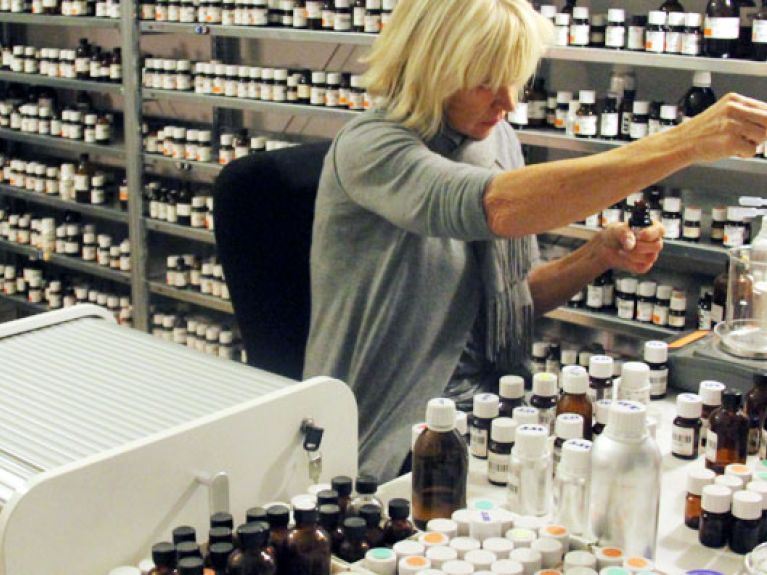The Art of Smell
Berlin-based smell expert Sissel Tolaas wants to transform the way we experience the world through our noses.

At Dresden’s Military Museum, visitors can open a small box and take in a powerful whiff of trenches from World War I—a smell that’s been described as a mixture of earth, gun powder, and death. “I replicated the smells through chemistry,” says the exhibit’s creator Sissel Tolaas, a Norwegian chemist and artist. “I had to rely on my knowledge in doing extreme projects and the description from army officers.”
Tolaas is one of the most respected smell experts in the world. Her research is funded by the perfumery corporation International Flavors and Fragrances (IFF) in New York. Out of her Wilmersdorfer lab in Berlin, Tolaas designs smell experiments and branding studies for corporate clients like Adidas and Mercedes Benz. She’s also created a number of provocative art installations in Germany and throughout the world.
In Tolaas’s 2006 exhibit titled the FEAR of Smell: the Smell of FEAR, she collected the smells of nine paranoid men and painted their odor on to walls using micro-capsulation. When museum visitors rubbed the walls, the men’s body odor was released into the air. Some visitors found the smells repulsive; others were fascinated.
Tolaas records and captures smells using a small machine in places like Stockholm, London, Cape Town, Mexico City and Berlin. She then replicates the smells in her laboratory to create a kind of smell map of cities. Tolaas found a corner of an East Berlin underground station that still smells like the GDR (lignite, train rails, and cleaning agents) and describes parts of the Berlin neighborhood Charlottenburg as smelling of expensive soap and money.
Most recently, Tolaas spent five years mapping smells in the U.S.’s Kansas City, Missouri and Kansas City, Kansas. The two cities are divided by a river and by ethnicities and income levels. “This project for me was about segregation,” says Tolaas. She thinks smell say a lot about our quality of life from pollution to how our level of social engagement. Sissel says, in the Kansas City project, “my purpose was to engage with children and their parents and to get them walking through all parts of the city.” Residents left their cars at home and took to the streets with smell cards to experience the differences between the two communities. Tolaas also held dozens of workshops for children to teach them about smell.
Tolaas considers herself a kind of smell ambassador. She thinks people should breathe deeply and to not make so many value judgements about what smells bad or good. “We live in a world that is deodorized, pasteurized, and camouflaged for your protection, but by doing this we are missing out on a lot of important information.”
© www.deutschland.de